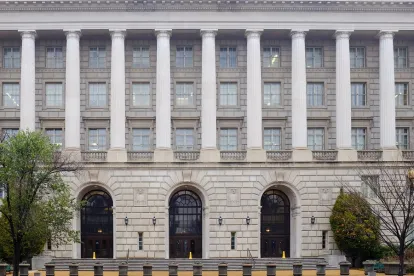In February 2020, the IRS announced that it would step up efforts to contact high-income taxpayers (defined as earning $100,000 or more per year), who in prior years have failed to file one or more tax returns. The IRS’s enforcement effort in 2020 was announced, in part, in reaction to a 2018 GAO study that showed a 40% decline in non-filer investigations since 2010. Indeed, by 2018, non-filer investigations declined to .8 million for individuals and .4 million for businesses. The decline in IRS non-filer investigations was a result of reduced IRS resources and funding.
The IRS’s 2020 Non-Filer Enforcement Initiative promised some of the following strategies to catch non-filing high net worth individuals and non-compliant businesses:
-
Increase the identification and case creation for individual and business non-filers. New cases would be assigned to IRS employees for appropriate resolution.
-
Automated Substitute for Return program (ASFR). Affected individual taxpayers who have not filed tax returns, but whose available income information shared with the IRS indicated a significant income tax liability, would see ASFR’s filed by the IRS. As part of the ASFR program, the IRS would send notices to these taxpayers alerting them to the potential liability.
-
Campus Automated 6020(b) program. The campus automated 6020 (b) program was designed to promote employment tax filing compliance by identifying business taxpayers with employment tax requirements who have not filed for a specific period. The IRS intended to ensure businesses complied with their employment tax filing and payment requirements as part of an ongoing audit priority for the IRS.
-
Delinquent Return Refund Hold program (DRRH). As a matter of course, the IRS would hold an individual taxpayer's income tax refund when their account has at least one unfiled tax return within 5 years of the filed return.
Almost a year later, and as a result of the IRS’s efforts, tax practitioners are seeing an increase in non-filer inquiries. High net worth non-filer taxpayers and businesses who had gone undetected for years are suddenly finding themselves owing significant tax, penalties and, in some cases, facing criminal prosecutions.
What should a non-filer’s strategy be for coming into compliance?
Non-filers can assume that the IRS will uncover their failure to file eventually, particularly as the IRS’s enforcement initiative for non-filers is ramped up. When returns remain unfiled, the statute of limitations to audit those tax years remains open indefinitely. As years continue on, it makes it more difficult for a taxpayer to file a return at all. The failure to file for one or two years snowballs into an overwhelming problem marked by inadequate or incomplete records often accompanied by a reluctance to undertake the effort based on fear, cost, and the time required to gather the information. Thus, a non-filer is left with a difficult quandary-- file a current year’s return and hope the IRS doesn’t detect prior non-compliance or continue to remain out of compliance and face severe penalties and potential criminal prosecution indefinitely. Given the IRS’s enforcement priority, taxpayers should retain an experienced and qualified tax attorney to discuss the options and they should do so under the protection of the attorney-client privilege. Discussions with accountants about prior non-compliance are generally not privileged and can be discoverable by the IRS if proper measures are not put into place.
For taxpayers who have not filed returns for many years, how many years of delinquent returns should they file?
How many years back should a taxpayer file his or her delinquent returns? The answer is that it depends on many factors: the level of unreported income, the involvement in listed, reportable or transactions of interest, a state taxing agency audit or investigation, whether the taxpayer participates in voluntary disclosure, whether income is from illegal sources, the degree of flagrancy in the non-reporting, prior compliance or non-compliance, whether fraud penalties are likely, whether partners, related entities or spouses are currently under audit, whether criminal prosecution is likely, and many other factors.
Thus, the discussion of how many years returns are sufficient to put a taxpayer into compliance is a difficult and lengthy one that should be evaluated on a case-by-case basis. For example, a taxpayer may unknowingly be under IRS investigation or audit and will not be eligible to participate in a voluntary disclosure. Alternatively, if a taxpayer files delinquent returns with the IRS, the returns themselves can be used as evidence in a potential criminal investigation. Non-compliant taxpayers should be careful to discuss the factors that led up to the non-compliance with counsel so a strategy can be put into place that best protects the taxpayer from criminal prosecution and civil fraud penalties.
What penalties could apply to non-filers?
Prior years’ unfiled returns with balances due will have the following associated penalties:
-
Failure-to-file penalty (5% per month, maximum of 25%).
-
Failure-to-pay penalty (0.5% per month, maximum of 25%); combined with the failure-to-file penalty can reach a maximum of 47.5%.
-
Fraudulent failure-to-file penalties triple the normal failure-to-file penalty—increasing the maximum penalty from 25% to 75%.
-
Information returns for foreign accounts, gifts, entities and assets have special penalties that can be significant, depending upon the information return in question and the facts for non-reporting.
While circumstances surrounding the previous non-compliance are very fact specific, some taxpayers may be entitled to First Time Penalty Abatement relief or have reasonable cause defenses to some penalties. The legal authority for requesting relief from penalties is vast and fact specific. Taxpayers cannot assume that they will avoid civil penalties when they come into compliance; however, with the assistance of experienced tax counsel, some penalties may be minimized.
What happens when a taxpayer has remained out of compliance for many years and the IRS has filed Substitutes for Returns?
Substitutes for Returns (SFRs) are returns the IRS creates for non-filers based upon information the agency receives from third party reporters. Income from Forms 1099, W-2 and other information returns are used to calculate a tax liability for the delinquent taxpayer and, eventually, an assessment of the tax due is made allowing the IRS to begin collecting the tax based on the SFR. The IRS does not determine favorable deductions, exemptions and credits on SFRs, thus maximizing the tax that the non-filer will owe.
Once SFRs are recorded in the IRS’s records for the taxpayer, the taxpayer who then prepares and files the returns to come into compliance (and take advantage of expenses and credits), will be closely scrutinized to ensure that the delinquent returns match the information the IRS used to generate the SFR. Some taxpayers may be required to file delinquent/replacement returns with the IRS SFR Reconsideration Unit. Other complications are likely to ensue as well once the SFR is assessed if the taxpayer files its own returns for the same years. For example, if the taxpayer was entitled to refunds of income tax paid with respect to prior years and the delinquent returns are filed after the statute of limitations for refunds has expired, the taxpayer will lose the refund forever.
Conclusion
The issues non-filer taxpayers face can have serious consequences, from substantial monetary penalties to criminal prosecution. The IRS has publicly stated that it is continuing to pursue business and individual non-filers. Thus, taxpayers whose tax returns are delinquent and remain unfiled should consider fixing the problem now before the IRS identifies them in its non-filer program. The outcome may be better if the taxpayer proactively takes charge of the situation and proceeds to file the delinquent returns under the guidance of an experienced tax professional.




 />i
/>i

